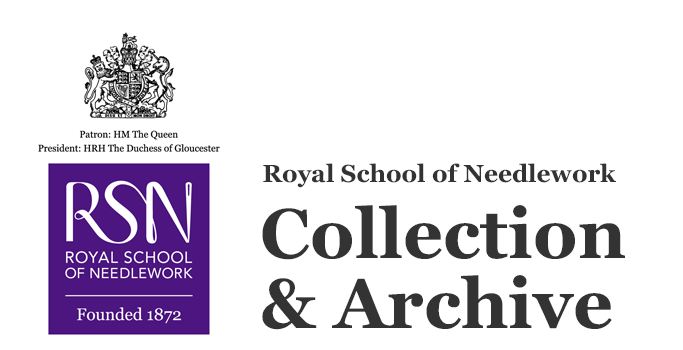Panel
Object name
Date made
Early 20th century
Place made
Description
This unfinished Berlin wool work panel, probably embroidered in the early 20th century, features a traditional design with colourful flowers and a blue border. This piece has been completely worked in cross stitch on Penelope canvas.
Content description
This Berlin wool work panel, probably embroidered in the early 20th century, features a traditional floral design with pink, purple, red, and yellow flowers and green and brown leaves and a blue border. This piece has been completely worked in cross stitch on Penelope canvas. Perhaps intended to be a decoration for soft furnishing when finished, the sides of the panel have been stitched onto strips of cotton, which were originally mounted to a frame during the embroidery process.
Berlin wool work was a very popular style of embroidery in Europe throughout the 19th century, especially in the middle and later decades. It developed in Germany and rapidly spread across Europe and North America. Berlin wool work often involved brightly coloured threads, which were newly affordable thanks to the advent of aniline dyes. These colourful threads were made of wool, which were used to stitch on a canvas grid either in tent stitch or in cross stitch. Printed and hand-coloured patterns such as this one were inexpensive and distributed widely. Because Berlin wool work uses simple stitches and relied on inexpensive materials and patterns, it was accessible to embroiderers across a wide range of incomes and skill levels. This object is very likely the work of a woman in the home or a girl in the home or at school.
Berlin wool work was a very popular style of embroidery in Europe throughout the 19th century, especially in the middle and later decades. It developed in Germany and rapidly spread across Europe and North America. Berlin wool work often involved brightly coloured threads, which were newly affordable thanks to the advent of aniline dyes. These colourful threads were made of wool, which were used to stitch on a canvas grid either in tent stitch or in cross stitch. Printed and hand-coloured patterns such as this one were inexpensive and distributed widely. Because Berlin wool work uses simple stitches and relied on inexpensive materials and patterns, it was accessible to embroiderers across a wide range of incomes and skill levels. This object is very likely the work of a woman in the home or a girl in the home or at school.
Dimensions
width: 54cm
height: 36cm
height: 36cm
Materials
Stitches
Techniques
Motifs
Catalogue number
RSN.2786
© Royal School of Needlework

